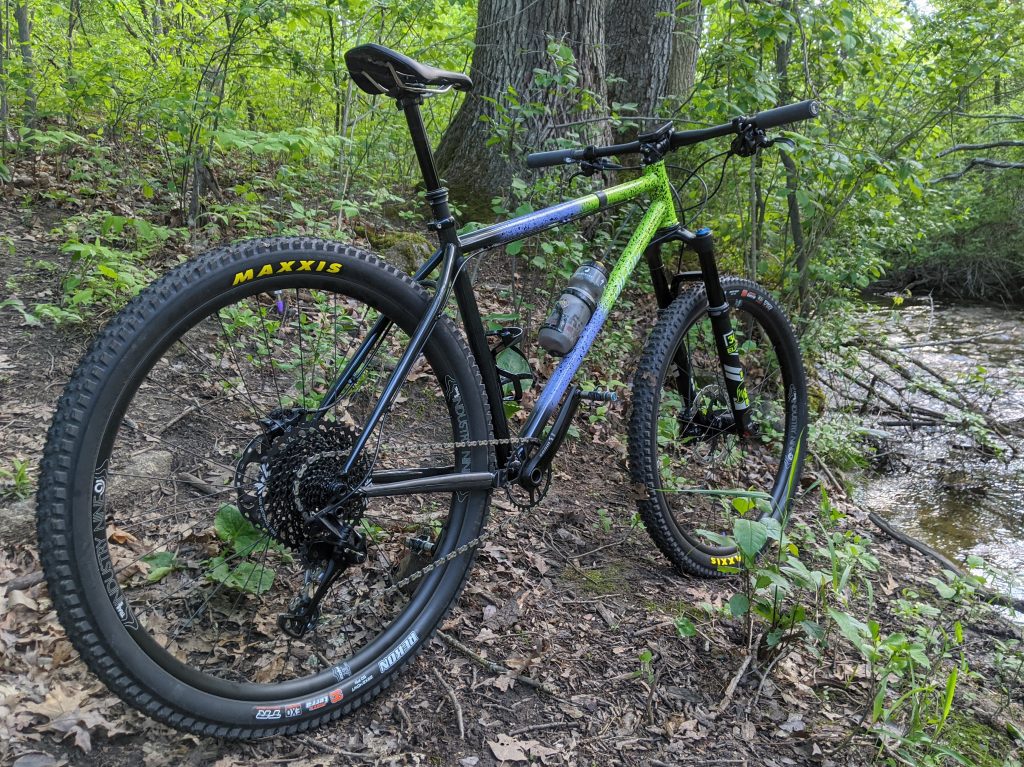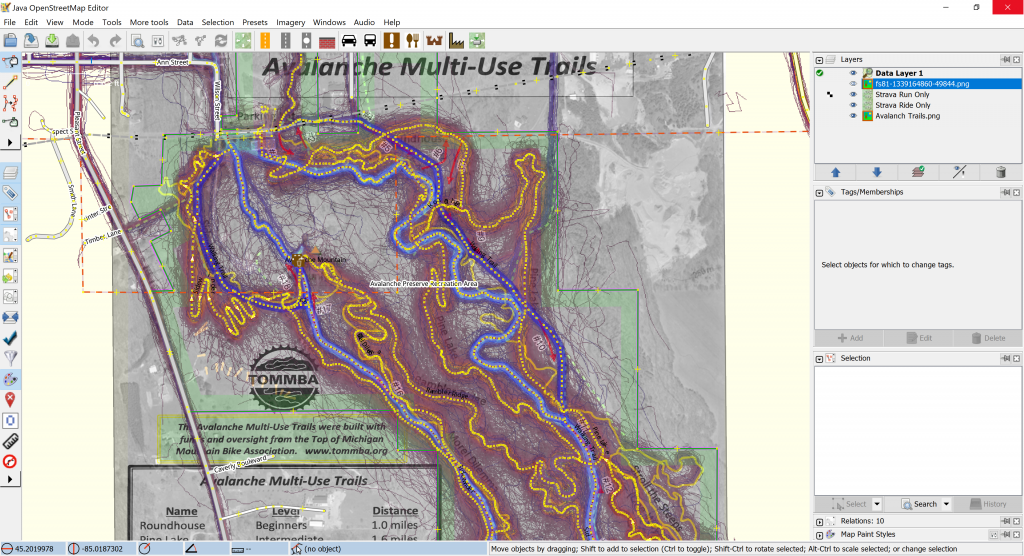Nearly four years after getting a full suspension XC / trail bike (2016 Specialized Camber) and beginning to really enjoy riding with a bit more travel and a dropper post I started getting the itch to build a similarly spec’d hard tail. Picking up a few particularly good deals (frame/fork), shopping smartly, using some parts I’d collected over the years, and getting some parts from friends, I ended up putting together an All-City Electric Queen.
This steel frame from a QBP brand best known for urban bikes, fitted with a smart choice drivetrain (SRAM GX), higher end wheels (I9 Hydra hubs) and suspension (Fox 34), and reliable brakes (Shimano SLX) is the solid spec build that I was wanting. The frame came complete with a matching rigid fork, and I anticipate switching over to the rigid fork in springtime or when the Fox 34 is out for service.
After the first shakedown ride at Stony Creek I’m pretty happy with the bike. The geometry of the frame itself is a little curious, but it seems to fit me well. Specifically, it has a fairly slack seat tube, tall head tube, tall seat tube, and rather high top tube. This means I have minimal stand-over (akin to the Titus Racer X 29er) and the saddle has to sit quite-forward on the rails, but it seems to work and feels good when pedaling. It also results in the controls (dropper lever and shifter) hitting the top tube when turning the bars, so I’ve had to pad the top tube with some 3M mastic tape.
I suspect this frame would work well for the sort of long-leg/short-torso rider who often finds themselves on a custom frame, but it also works well for me. It also means that a slim top tube bag like the Relevate Designs Tangle would fit along with bottles. Or, it could have been placed almost 1.5″ lower (with a shorter head tube and seat tube) and still been good… But I’m not a frame designer, so I suspect there’s some good but unknown-to-me reason why this was done.
Coming in at 28 pounds it’s not a light bike, but being a cheaper steel frame, 120mm fork with 34mm stanchions, 2.4″ wide quite-knobby tires, dropper post, and aluminum rims I’m okay with it. Going to some carbon bits (eg: bar) I could drop some weight, but I don’t think it’ll matter much, as this is roughly the same weight as the Camber, which I love riding.
Part details are below, and photos of the build showing everything from parts to checking clearances, can be found here: All-City Electric Queen.
Frame: All-City Electric Queen (Large, Lavender/Lime w/ Splatter)
Fork: Fox 34 Step-Cast (Factory, FIT4 damper, Black Upper Tube Finish, 120mm, 51mm offset, 15QR)
Headset: Cane Creek SlamSet (Black, ZS44/EC44/40)
Crankset: SRAM X1 1400 GXP
Bottom Bracket: SRAM GXP (Black)
Chainring: SRAM X-SYNC 2 (32t, steel, Direct Mount, 3mm / Boost)
Derailleur: SRAM GX Eagle
Shifter: SRAM GX Eagle
Shift Cables / Housing: Shimano Bulk
Cassette: SRAM XG-1275
Brakes: Shimano SLX M7100 (Levers: BL-M7100, Calipers: BR-7100)
Front Rotor: SM-RT86-L (203mm)
Rear Rotor: SM-RT86-M (180mm)
Front Brake Adapter: SM-MA-F203P/P (160mm Post to 203mm Post)
Rear Brake Adapter: Shimano SM-MA-R180P/S (IS to 180mm Post)
Stem: Specialized Stout XC, (+6°, 75mm)
Bar: Salsa Salt Flat (750mm)
Wheels: Industry Nine Trail S Hydra 28H (29″)†
Tires: Maxxis Rekon (29 x 2.4″, 3C/EXO/TR)
Seatpost: Fox Transfer Performance Elite (2020, Black, 125mm, 30.9mm, Internal)
Dropper Lever: Wolf Tooth ReMote Light Action (Black, 22.2mm Clamp)
Seatpost Collar: Salsa Lip-Lock (Black, 33.3mm)
Saddle: Specialized Power Expert (143mm)
Pedals: Crank Brothers Eggbeater 3 (Blue, from El Mariachi Ti)
Grips: ESI Extra Chunky (Black)
Bottle Cages: Specialized Zee Cage II (Black Gloss, 1x Left, 1x Right)
Computer: Garmin Edge 530, Garmin Speed and Cadence Sensors (v1)
Bell: Mirracycle Original Incredibell (Black)
Derailleur Hanger: QBP 687
Frame Protection Tape: 3M 2228, McMaster-Carr UHMW PE
Rigid Fork: All-City Electric Queen (Large, Lavender/Lime w/ Splatter)
Crown Race: Cane Creek BAA0009S (40-Series 52/30mm Steel)
Front Brake Adapter: Shimano SM-MA-F203P/S (IS to 203mm Post)
† Per I9, these are built with Sapim Race Straight-Pull spokes, 303mm all around. (For 29er. If these were 27.5 wheels they’d be 285mm.)
Comments closed
